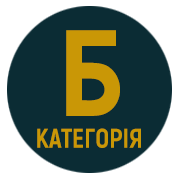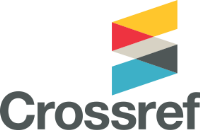PHYSICAL THERAPY AFTER ISCHEMIC STROKE IN THE EARLY RECOVERY PERIOD
DOI:
https://doi.org/10.32782/pub.health.2025.1.26Keywords:
10-meter gait test, Barthel scale, stroke, physical therapyAbstract
Topicality. Vascular diseases of the brain, including stroke, have been on the list of the most importantmedical and social problems in recent years, as they cause great economic damage to society, causing long-term disability and mortality.The goal of the work is to analyze the quality of physical therapy programs for patients with different stroke severityand to substantiate their impact on functional recovery.Materials and methods. The following tests and scales were used for the examination: The Barthel scale and the 10-meter gait test. The results were statistically processed using the MedStat statistical package. In all cases, the valueof 0.05 was taken as the critical level of significance. The study was conducted at the public organization “Rehabilitation Complex Agape Ukraine”. The study involved 20 patients, including 8 men and 12 women, aged 50 to 70 years. All patients had suffered an ischemic stroke: the right (7 patients) and left (13 patients) sides of the body. Rehabilitationlasted from 2 to 6 weeks. The patients had sessions 3 times a day, 5 times a week, lasting 50 minutes each.Research results. The values of the 10-meter gait test in the early period of rehabilitation of male patients with lefthemisphere brain damage compared to the initial examination showed a noticeable improvement, as the final results showed values of 80% of the norm compared to the initial 60%. Still, we did not obtain a statistically significant difference in the indicators. Instead, in the group of men with right hemisphere lesions, the values differed at the level of p˂0.05. From thebeginning of therapeutic interventions (46% of the norm), high results were achieved that corresponded to a regular coursewithout disorders; the rate was 99% of the norm. In the group of female patients with left hemisphere lesions, the values of the 10-meter test differed at the significance level of p˂0.05. The test result improved from 30% of the norm to 58%. In thegroup of patients with right hemisphere lesions, the result was achieved only up to 39% of the norm compared to the initialvalues (20% of the norm). The study found that early physical therapy positively affects the restoration of functional mobility.The highest results on the Barthel scale (90–100 points) were achieved by 8 people out of 20. It was statistically proventhat there is a significant difference between the functional state at the time of admission and discharge. Most of the studyparticipants demonstrated progress in essential aspects of functioning during the recovery period.Conclusions. Early rehabilitation has a practical effect on restoring gait function and general functional status and increasing muscle strength of the upper and lower extremities in patients who have suffered an ischemic stroke.
References
Віндюк П.А., Сапа-Пушкар Л.О. Використання комплексу фізичної реабілітації після перенесеного ішемічного інсульту. Науковий часопис НПУ імені М.П. Драгоманова. 2019. №11. С. 31–34. URL: http://nbuv.gov.ua/UJRN/ Nchnpu_015_2019_11_8
Закаляк Н., Ошієвський Р. Роль фізичних терапевтів у відновленні після інсульту. Матеріали XIІ-ї Міжнародної науково-практичної конференції «Розвиток сучасної освіти і науки: результати, проблеми, перспективи». Конін-Ужгород-Перемишль: Посвіт, 2022. С. 182–184. URL: https://dspace.uzhnu.edu.ua/jspui/bitstream/lib/45100/1/Rozwoj_22.04.2022_zbirnyk.pdf
Malik A.N., Tariq H., Afridi A., Rathore F.A. Technological advancements in stroke rehabilitation. J Pak Med Assoc. 2022 Aug. 72(8). P. 1672–1674. https://doi.org/10.47391/JPMA.22-90.
Родін В.О., Ананьєва, Т. Г. Фізична реабілітація хворих після ішемічного інсульту на більш ранніх термінах відновлення. Слобожанський науково-спортивний вісник. 2011. №1. С. 92–95.
Віничук С.М., Прокопів М.М., Черенько Т.М. Пошук нових підходів до лікування гострого ішемічного інсульту. Український неврологічний журнал. 2010. № 1 (14). С. 3–10.
Василенко, Є., Ярош О., Остапенко Л. Інсульт: сучасні погляди на проблему. Вісник національної академії наук України. 2007. №5. С. 29–34. URL: http://nbuv.gov.ua/UJRN/vnanu_2007_5_5
Kwok A., Cheung D., Gordon M., Mudryk E., Manns P.J. Patient and therapist perspectives on physical therapy outcome measures and engagement after stroke: A case study. Physiother Theory Pract. 2023. №39. P. 12. https://doi.org/ 10.1080/09593985.2022.2092801.
Port I.G., Wevers L.E., Lindeman E., Kwakkel G. Effects of circuit training as alternative to usual physiotherapy after stroke: andomized controlled trial. BMJ. 2012. №344. e2672. https://doi.org/10.1136/bmj.e2672.
Vostry M, Fischer S., Cmorej P.C., Nesvadba M., Peran D., Sin R. Combined Therapy for Patients after Ischemic Stroke as a Support of Social Adaptability. Neuro Endocrinol Lett. 2019. №40(7-8). P. 329–332. PMID: 32304370
Wu W.X., Zhou C.Y., Wang Z.W. et al. Effect of Early and Intensive Rehabilitation after Ischemic Stroke on Functional Recovery of the Lower Limbs: A Pilot, Randomized Trial. J Stroke Cerebrovasc Dis. 2020. №29(5). P. 49. https://doi.org/10.1016/j.jstrokecerebrovasdis.2020.104649.
Duncan P.W., Sullivan K.J., Behrman A.L. et al. Body-weight-supported treadmill rehabilitation after stroke. N Engl J Med. 2011. №364(21). P. 26–36. https://doi.org/10.1056/NEJMoa1010790.
Knecht S., Hesse S., Oster P. Rehabilitation after stroke. Deutsch Arztebl Int. 2011. №108(36). P. 600–606. https://doi.org/10.3238/arztebl.2011.0600
Hоyer E., Opheim A., Moe-Nilssen R., Strand L.I. Community living after in-hospital specialized rehabilitation in patients with severe disability after stroke: a long-term follow-up after a randomized controlled trial. Disabil Rehabil. 2023. №45(11). P. 22–29. https://doi.org/10.1080/09638288.2022.2076934.
Roman N.A., Miclaus R.S., Nicolau C., Sechel G. Customized Manual Muscle Testing for Post-Stroke Upper Extremity Assessment. Brain Sci. 2022. №12(4). P. 457. https://doi.org/10.3390/brainsci12040457.
Saso A., Moe-Nilssen R., Gunnes M., Askim T. Responsiveness of the Berg Balance Scale in patients early after stroke. Physiother Theory Pract. 2016. №32(4). P. 251–261. https://doi.org/10.3109/09593985.2016.1138347.
Simon P.J., Valerie М., Pomeroy W., Jasmine S., Gottfried S. M., Tulasi G., Sharon J.R. Philip. Does Stroke Location Predict Walk Speed Response to Gait Rehabilitation. Human Brain Mapping. 2016. № 37. P. 32–38. https://doi.org/10.1002/hbm.23059.
Супрунюк С. Ю., Усова О. В. Важливість реабілітації післяінсультних пацієнтів у ранньому відновному періоді. Молода наука Волині: пріоритети та перспективи досліджень : матеріали ХVІІ Міжнародної наук.-практ. конф. студентів, аспірантів та молодих учених, м. Луцьк, 16–17 трав. 2023 р. / ВНУ ім. Лесі Українки, Луцьк, 2023. – 1 електрон. опт. диск (CD-ROM). С. 685. Обсяг даних 9,38 Мб.
Супрунюк С., Усова О. Особливості ускладнення, наслідків та функціональних очікувань при інсульті. Сучасні оздоровчо-реабілітаційні технології : матеріали V Регіональної наук.-практ. конф. молодих учених, м. Луцьк, 11–13 груд. 2023 р. / ВНУ ім. Лесі Українки, каф. фіз. терапії та ерготерапії ; редкол.: О. Я. Андрійчук [та ін.]. Луцьк, 2023. Вип. 14. С. 57–58.
Супрунюк C. Ю. Фізична терапія після ішемічного інсульту в ранньому відновному періоді. Кваліфікаційна робота магістра. Волинський національний університет імені Лесі Українки. Луцьк, 2023. 65 с. URL: https://drive.google.com/file/d/1yPXd8fDKQGdCe8m8yjQ6LWgUvmm-8KRz/view?usp=drivesdk








